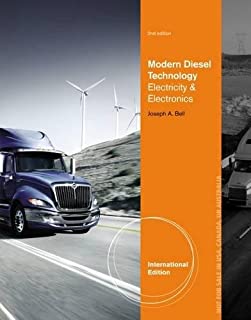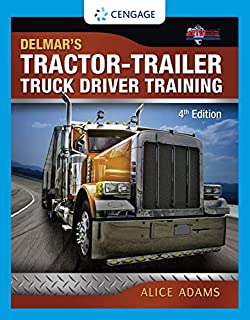Applied Gas Dynamics
Original price was: ₹10,808.00.₹8,646.40Current price is: ₹8,646.40.
ISBN: 9781119500452
Author/Editor: Ethirajan Rathakrishnan
Publisher: John Wiley
Year: 2019
Available on backorder
Description
Applied gas dynamics 2ed (hb 2019) latest available information and guidelines are incorporated. Easy to understand and thorough content. Standard clinical norms and practical implications have been taken care of John Wiley (exclusive).
Additional information
| Weight | 1.214 kg |
|---|
Product Properties
| Year of Publication | 2019 |
|---|---|
| Table of Contents | Preface xv Author Biography xvii About the Companion Website xix 1 Basic Facts 1 1.1 Definition of Gas Dynamics 1 1.2 Introduction 1 1.3 Compressibility 2 1.3.1 Limiting Conditions for Compressibility 3 1.4 Supersonic Flow - What is it? 4 1.5 Speed of Sound 5 1.6 Temperature Rise 7 1.7 Mach Angle 8 1.7.1 Small Disturbance 10 1.7.2 Finite Disturbance 10 1.8 Thermodynamics of Fluid Flow 11 1.9 First Law of Thermodynamics (Energy Equation) 11 1.9.1 Energy Equation for an Open System 12 1.9.2 Adiabatic Flow Process 14 1.10 The Second Law of Thermodynamics (Entropy Equation) 15 1.11 Thermal and Calorical Properties 16 1.11.1 Thermally Perfect Gas 16 1.12 The Perfect Gas 17 1.12.1 Entropy Calculation 18 1.12.2 Isentropic Relations 20 1.12.3 Limitations on Air as a Perfect Gas 25 1.13 Wave Propagation 26 1.14 Velocity of Sound 26 1.15 Subsonic and Supersonic Flows 27 1.16 Similarity Parameters 28 1.17 Continuum Hypothesis 28 1.18 Compressible Flow Regimes 30 1.19 Summary 31 Exercise Problems 34 2 Steady One-Dimensional Flow 43 2.1 Introduction 43 2.2 Fundamental Equations 43 2.3 Discharge from a Reservoir 45 2.3.1 Mass Flow Rate per Unit Area 47 2.3.2 Critical Values 51 2.4 Streamtube Area-Velocity Relation 54 2.5 de Laval Nozzle 57 2.5.1 Mass Flow Relation in Terms of Mach Number 65 2.5.2 Maximum Mass Flow Rate per Unit Area 65 2.6 Supersonic Flow Generation 66 2.6.1 Nozzles 68 2.6.2 Physics of the Nozzle Flow Process 69 2.7 Performance of Actual Nozzles 71 2.7.1 Nozzle Efficiency 71 2.7.2 Nozzle Discharge Coefficient 73 2.8 Diffusers 75 2.8.1 Special Features of Supersonic Diffusers 77 2.8.2 Supersonic Wind Tunnel Diffusers 78 2.8.3 Supersonic Inlets 81 2.8.4 Fixed-Geometry Inlet 82 2.8.5 Variable-Geometry Inlet 83 2.8.6 Diffuser Efficiency 84 2.9 Dynamic Head Measurement in Compressible Flow 88 2.9.1 Compressibility Correction to Dynamic Pressure 91 2.10 Pressure Coefficient 95 2.11 Summary 97 Exercise Problems 99 3 Normal Shock Waves 113 3.1 Introduction 113 3.2 Equations of Motion for a Normal Shock Wave 113 3.3 The Normal Shock Relations for a Perfect Gas 115 3.4 Change of Stagnation or Total Pressure Across a Shock 118 3.5 Hugoniot Equation 121 3.5.1 Moving Shocks 123 3.6 The Propagating Shock Wave 123 3.6.1 Weak Shock 128 3.6.2 Strong Shock 130 3.7 Reflected Shock Wave 133 3.8 Centered Expansion Wave 138 3.9 Shock Tube 139 3.9.1 Shock Tube Applications 142 3.10 Summary 145 Exercise Problems 148 4 Oblique Shock and Expansion Waves 155 4.1 Introduction 155 4.2 Oblique Shock Relations 156 4.3 Relation Between ? and ? 158 4.4 Shock Polar 160 4.5 Supersonic Flow Over a Wedge 162 4.6 Weak Oblique Shocks 165 4.7 Supersonic Compression 167 4.8 Supersonic Expansion by Turning 169 4.9 The Prandtl-Meyer Expansion 170 4.9.1 Velocity Components Vr and V? 172 4.9.2 The Prandtl-Meyer Function 175 4.9.3 Compression 177 4.10 Simple and Nonsimple Regions 178 4.11 Reflection and Intersection of Shocks and Expansion Waves 178 4.11.1 Intersection of Shocks of the Same Family 181 4.11.2 Wave Reflection from a Free Boundary 183 4.12 Detached Shocks 189 4.13 Mach Reflection 191 4.14 Shock-Expansion Theory 197 4.15 Thin Airfoil Theory 202 4.15.1 Application of Thin Aerofoil Theory 203 4.16 Summary 210 Exercise Problems 212 5 Compressible Flow Equations 221 5.1 Introduction 221 5.2 Crocco's Theorem 221 5.2.1 Basic Solutions of Laplace's Equation 224 5.3 General Potential Equation for Three-Dimensional Flow 225 5.4 Linearization of the Potential Equation 226 5.4.1 Small Perturbation Theory 227 5.5 Potential Equation for Bodies of Revolution 229 5.5.1 Conclusions 230 5.5.2 Solution of Nonlinear Potential Equation 231 5.6 Boundary Conditions 231 5.6.1 Bodies of Revolution 232 5.7 Pressure Coefficient 233 5.7.1 Bodies of Revolution 234 5.8 Summary 234 Exercise Problems 237 6 Similarity Rule 239 6.1 Introduction 239 6.2 Two-Dimensional Flow: The Prandtl-Glauert Rule for Subsonic Flow 239 6.2.1 Prandtl-Glauert Transformations 239 6.2.2 The Direct Problem (Version I) 241 6.2.3 The Indirect Problem (Case of Equal Potentials): P-G Transformation (Version II) 243 6.2.4 Streamline Analogy (Version III): Gothert's Rule 244 6.3 Prandtl-Glauert Rule for Supersonic Flow: Versions I and II 245 6.3.1 Subsonic Flow 246 6.3.2 Supersonic Flow 246 6.4 The von Karman Rule for Transonic Flow 248 6.4.1 Use of the von Karman Rule 249 6.5 Hypersonic Similarity 250 6.6 Three-Dimensional Flow: Gothert's Rule 252 6.6.1 General Similarity Rule 252 6.6.2 Gothert's Rule 254 6.6.3 Application toWings of Finite Span 255 6.6.4 Application to Bodies of Revolution and Fuselages 255 6.6.5 The Prandtl-Glauert Rule 257 6.6.6 The von Karman Rule for Transonic Flow 261 6.7 Critical Mach Number 261 6.7.1 Calculation of M 264 6.8 Summary 266 Exercise Problems 269 7 Two-Dimensional Compressible Flows 271 7.1 Introduction 271 7.2 General Linear Solution for Supersonic Flow 271 7.2.1 Existence of Characteristics in a Physical Problem 273 7.2.2 Equation for the Streamlines from Kinematic Flow Condition 274 7.3 Flow over a Wave-Shaped Wall 276 7.3.1 Incompressible Flow 276 7.3.2 Compressible Subsonic Flow 277 7.3.3 Supersonic Flow 278 7.3.4 Pressure Coefficient 278 7.4 Summary 280 Exercise Problems 280 8 Flow with Friction and Heat Transfer 283 8.1 Introduction 283 8.2 Flow in Constant Area Duct with Friction 283 8.2.1 The Fanno Line 284 8.3 Adiabatic, Constant-Area Flow of a Perfect Gas 285 8.3.1 Definition of Friction Coefficient 286 8.3.2 Effects of Wall Friction on Fluid Properties 287 8.3.3 Second Law of Thermodynamics 288 8.3.4 Working Relations 289 8.4 Flow with Heating or Cooling in Ducts 294 8.4.1 Governing Equations 294 8.4.2 Simple-Heating Relations for a Perfect Gas 295 8.5 Summary 300 Exercise Problems 303 9 Method of Characteristics 309 9.1 Introduction 309 9.2 The Concepts of Characteristics 309 9.3 The Compatibility Relation 310 9.4 The Numerical Computational Method 312 9.4.1 Solid and Free Boundary Points 313 9.4.2 Sources of Error 316 9.4.3 Axisymmetric Flow 316 9.4.4 Nonisentropic Flow 317 9.5 Theorems for Two-Dimensional Flow 318 9.6 Numerical Computation with Weak Finite Waves 320 9.6.1 Reflection of Waves 320 9.7 Design of Supersonic Nozzle 323 9.7.1 Contour Design Details 324 9.8 Summary 328 10 Measurements in Compressible Flow 329 10.1 Introduction 329 10.2 Pressure Measurements 329 10.2.1 Liquid Manometers 329 10.2.2 Measuring Principle of Manometers 330 10.2.3 Dial-Type Pressure Gauges 332 10.2.4 Pressure Transducers 333 10.3 Temperature Measurements 335 10.4 Velocity and Direction 338 10.5 Density Problems 339 10.6 Compressible Flow Visualization 339 10.6.1 Supersonic Flows 340 10.7 Interferometer 341 10.7.1 Formation of Interference Patterns 341 10.7.2 Quantitative Evaluation 342 10.7.3 Fringe-Displacement Method 344 10.8 Schlieren System 344 10.8.1 Range and Sensitivity of the Schlieren System 347 10.8.2 Optical Components Quality Requirements 347 10.8.3 Sensitivity of the Schlieren Method for Shock and Expansion Studies 350 10.9 Shadowgraph 352 10.9.1 Comparison of the Schlieren and Shadowgraph Methods 353 10.10 Wind Tunnels 354 10.10.1 High-SpeedWind Tunnels 354 10.10.2 Blowdown TypeWind Tunnels 354 10.10.3 Induction Type Tunnels 355 10.10.4 Continuous Supersonic Wind Tunnels 356 10.10.5 Losses in Supersonic Tunnels 357 10.10.6 Supersonic Wind Tunnel Diffusers 358 10.10.7 Effects of Second Throat 360 10.10.8 Compressor Tunnel Matching 362 10.10.9 The Mass Flow Rate 365 10.10.10 Blowdown Tunnel Operation 369 10.10.11 Optimum Conditions 372 10.10.12 Running Time of Blowdown Wind Tunnels 373 10.11 Hypersonic Tunnels 375 10.11.1 Hypersonic Nozzle 377 10.12 Instrumentation and Calibration ofWind Tunnels 380 10.12.1 Calibration of SupersonicWind Tunnels 380 10.12.2 Calibration 381 10.12.3 Mach Number Determination 381 10.12.4 Pitot Pressure Measurement 382 10.12.5 Static Pressure Measurement 382 10.12.6 Determination of Flow Angularity 383 10.12.7 Determination of Turbulence Level 383 10.12.8 Determination of Test-Section Noise 384 10.12.9 Use of Calibration Results 384 10.12.10 Starting of Supersonic Tunnels 384 10.12.11 Starting Loads 385 10.12.12 Reynolds Number Effects 385 10.12.13 Model Mounting-Sting Effects 385 10.13 Calibration and Use of Hypersonic Tunnels 386 10.13.1 Calibration of Hypersonic Tunnels 386 10.13.2 Mach Number Determination 386 10.13.3 Determination of Flow Angularity 388 10.13.4 Determination of Turbulence Level 388 10.13.5 Reynolds Number Effects 389 10.13.6 Force Measurements 389 10.14 Flow Visualization 390 10.15 Summary 390 Exercise Problems 393 11 Ramjet 395 11.1 Introduction 395 11.2 The Ideal Ramjet 396 11.3 Aerodynamic Losses 401 11.4 Aerothermodynamics of Engine Components 404 11.4.1 Engine Inlets 404 11.5 Flow Through Inlets 405 11.5.1 Inlet Flow Process 406 11.5.2 Boundary Layer Separation 406 11.5.3 Flow Over the Inlet 406 11.6 Performance of Actual Intakes 410 11.6.1 Isentropic Efficiency 410 11.6.2 Stagnation Pressure Ratio 411 11.6.3 Supersonic Inlets 411 11.6.4 Supersonic Diffusers 412 11.6.5 Starting Problem 413 11.7 Shock-Boundary Layer Interaction 418 11.8 Oblique Shock Wave Incident on Flat Plate 419 11.9 Normal Shocks in Ducts 420 11.10 External Supersonic Compression 422 11.11 Two-Shock Intakes 423 11.12 Multi-Shock Intakes 427 11.13 Isentropic Compression 429 11.14 Limits of External Compression 431 11.15 External Shock Attachment 433 11.16 Internal Shock Attachment 433 11.17 Pressure Loss 434 11.18 Supersonic Combustion 442 11.19 Summary 444 Exercise Problems 447 12 Jets 451 12.1 Introduction 451 12.1.1 Subsonic Jets 453 12.2 Mathematical Treatment of Jet Profiles 454 12.3 Theory of Turbulent Jets 455 12.3.1 Mean Velocity and Mean Temperature 456 12.3.2 Turbulence Characteristics of Free Jets 457 12.3.3 Mixing Length 458 12.4 Experimental Methods for Studying Jets and the Techniques Used for Analysis 461 12.4.1 Pressure Measurement 462 12.5 Expansion Levels of Jets 464 12.5.1 Overexpanded Jets 464 12.5.2 Correctly Expanded Jets 467 12.5.3 Underexpanded Jets 469 12.6 Control of Jets 471 12.6.1 Classification of Control Methods 473 12.6.2 Role of Shear Layer in Flow Control 474 12.6.3 Supersonic Shear Layers 475 12.6.4 Use of Tabs for Jet Control 477 12.6.5 Evaluation of the Effectiveness of Some Specific Passive Controls 481 12.6.6 Grooves and Cutouts 519 12.7 Noncircular Jets and Shifted Tabs 519 12.7.1 Jet Control with Tabs 523 12.7.2 Shifted Tabs 527 12.7.3 Ventilated Triangular Tabs 532 12.7.4 Tab Edge Effect 535 12.8 Summary 541 Appendix A 547 |
| Author | Ethirajan Rathakrishnan |
| ISBN/ISSN | 9781119500452 |
| Binding | Hardback |
| Edition | 2 |
| Publisher | John Wiley |
You must be logged in to post a review.





Reviews
There are no reviews yet.